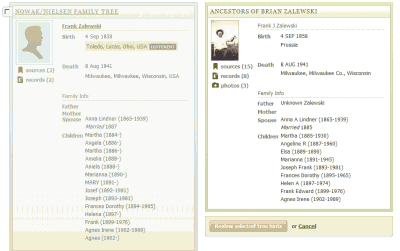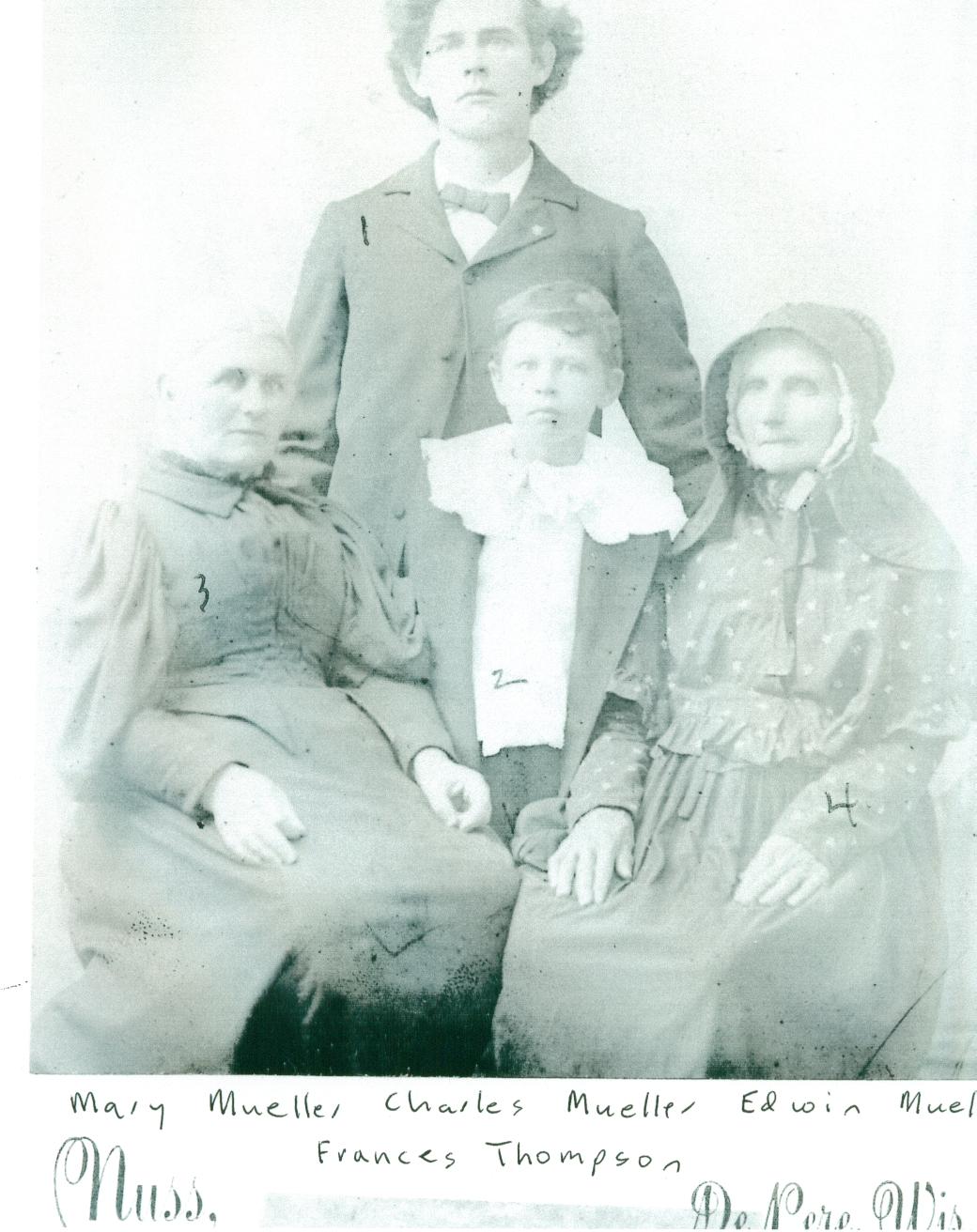It’s the bane of any genealogy research. Finding out you have incorrect information long after you’ve added it to your family tree. In the worst cases, this could have ended up with you researching the wrong line for years. Fortunately, I’ve never (at least not yet) had that issue.
While I love Ancestry.com with their user-submitted family trees and I have used it constantly in my research, it’s a double-edged sword, especially for newer researchers. I sigh and roll my eyes every time I see their television commercial that shows a woman who notices the “shaky leaf” on some of the names in her family tree. When she clicks on them, she is able to add whole new families to her tree. Unfortunately, it seems most people think it’s that easy. Just click and boom, all your work is done.
I admit that in the beginning of my research over ten years ago, I usually just went for quantity over quality. It was so exciting to find new people and information that you just added it. I’ve paid the price for that now, but fortunately not in any major way. I’ve just had to go back, change a few pieces, and re-find all of the sources. That has actually indirectly helped me find new information, since now I look closer at every source I find.
I can use my great-great-grandfather’s profile to prove my point.
For example, on my great-great-grandfather’s profile on Ancestry, Frank J ZALEWSKI, I have entered all of his info. I know most of the info is correct (or very close to it) and I have attached sources to everything. The Ancestry sources actually link you right to the document in question, sometimes right to the exact line. This helps prove the data and you can see it with your own eyes.

As you can see above, I’ve attached many sources to specific facts on Frank’s entry. (The double entries are from a mix of both Ancestry’s sources and my imported sources.) Every so, often I see a shaky leaf on Frank’s profile, which means he has a Ancestry hint to another document or tree. I’ve almost stopped looking at the tree hints because they’re usually not sourced, or the info is already taken directly from my tree. Look at this entry for a person who is supposedly the same Frank ZALEWSKI (click for larger version.)

See any difference? I guess I missed that Frank was born in Toledo, Ohio in 1858 instead of Poland, even though there is documented evidence that he arrived in Baltimore in 1889. Not to mention that he is listed as being born in Germany/Poland/Prussia in every census, as are his wife and 1st three daughters. Plus, it seems that they had many more kids than I thought, and even naming some of them the same. Interesting.
The one sad part about this specific entry is that it has “3 Sources” listed. Not only is the information blatantly wrong, it’s actually connected to a source that proves it’s wrong. Then it gets worse. There are a few more trees in the list and most of them have pulled the Toledo, Ohio information as fact. One bad seed was planted, that’s all it takes.
I guess the point is to get your sources and double-check everything you find. I’ve only added a few things from Ancestry trees, but I always make a note and double-check everything I find. Source. Source. Source.
A local TV station did a story on genealogy recently. In the article on the website, the reporter puts a list of tips to help you in your search. His last tip perfectly sums it up.
The internet is a great genealogical resource, but it’s also loaded with misinformation. People by their nature want to believe, and there are countless family trees online that are incorrect. Bad information will lead you down the wrong road. Just because your ancestor was named Phineas Figglebottom, don’t assume he’s the only Phineas Figglebottom. That’s a very common mistake people make.




?????
Hi, love your site, very inspiring :)